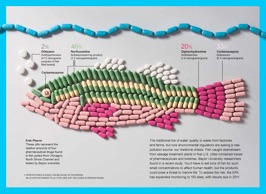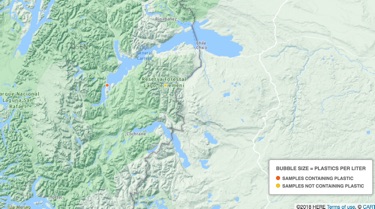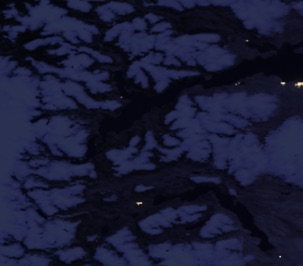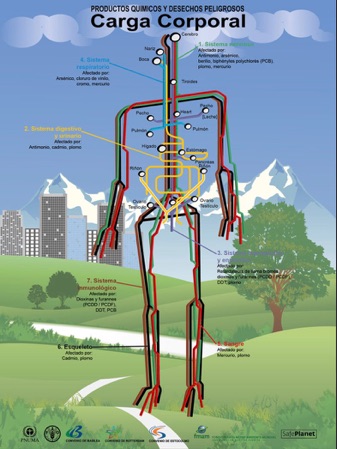Chemical pollution:
Persistent Organic Pollutants (POPs) : very limited amounts in
snow and water, but a lot of dioxins in the air of the region
due to extensive use of firewood burning for different purposes.
Quite possible Persistent Organic Pollutants in fish in the rivers.
Probable presence of oxybenzone and octinoxate : extensive
use of sunscreens due to ozone hole over Patagonia.
Probable presence of plastic micro-particles in the rivers due
to the move to biodegradable and oxo-degradable bags in the region.
Micro-plastic found in the lake by a scientific project:
www.adventurescientists.org/microplastics.html
Les microplastiques envahissent nos sols.pdf
Quite probable pollution of the lake by pharmaceuticals.
Certain oil pollution in lake Leones from
two-stroke engines on boats.
Honey of the region contains neonicotinoids -
a global problem.
Chemical pollution of water and nano-particles
pollution due to washing of technical clothes for
“adventure” and “bad weather” tourism. Special filters are needed on washing machines and other washing devices, but have not been installed so far.
Pollution of soil by glyphosate, killing its microbiota - used to control invasive plant species.
Glyphosate is really bad for earth worms. Comment se passer du glyphosate.pdf
“Science et vie”, June 2017: Real microbial disturbances are induced in soils by colossal amounts of antibiotics that are consumed (and rejected) by livestock. Some bacteria increase their numbers by 70%, others disappear. As to fungi, in principle insensitive to antibiotics, they undergo strong modifications.
Cattle is treated with diclofenac which effectively kills condors and vultures consuming the carcasses.
Proven and serious heavy metals pollution of soil and water in the region from old mines, such as the mine La Escondida. This lead and copper mine operated for short periods from 1954 to 1986 near Puerto Guadal, the last 2 years in the hands of Corfo (Production Development Corporation). Cows are still dying when grazing around. Mine operations also depleted the water table.
Heavy metals pollution of soil and water around Puerto Guadal (Spanish)
Pollution in the General Carrera lake basin (Spanish)
Pollution of soil by chemicals from antiparasites and antibiotics used in horses and mainly cows, severely altering the microbiota of the soil, including large microbiota, like worms and mushrooms. Alteration of microbiota: some bacteria can increase up to 70%, some bacteria disappear completely; mushrooms, which are usually insensitive to antibiotics, are subject to strong changes.
Pollution by neonicotinoids (in the region: used on cherry trees mainly), causing decline of pollinators such as bees, wild insects, bats. Presence of nerve agents in honey.
Study: Neonicotinoids in honey.pdf
Study: nerve agents in honey.pdf
Tourism-related pollution: air pollution and noise, solid waste and littering, sewage, aesthetic pollution.
Didimo (Didymosphenia geminata) in rivers. Tourism brings pathogens and highly virulent wildlife diseases which decimate local wildlife: Amphibians worldwide threatened by deadly fungus.pdf
Light pollution, kills a lot of birds, insects, marine life worldwide - very limited within the project.
Introduced and invasive species. Bird flu in the region.
Externally generated pollution: lots of salmon in rivers is unproper for consumption, it’s the “Frankenstein fish” escaped from the farms.
Antibiotics in salmon , Chile goes to environmental justice for the escape of 690,000 salmon: Chile acude a la justicia ambiental por el escape de 690.000 salmones.pdf
Social protests of 2019 added to the problem: Un millón de salmones están muriendo en Chile por protestas
Regional urban management: Coyhaique, the regional capital, is the most polluted city in the country,
the most polluted city in South America, and at times - in the world.
EU limits subsidies for burning trees under renewable energy directive
Absence of waste management policy in the region: several open rubbish dumps around the lake General Carrera.

Anthropogenic pollution




Very limited light pollution in the area
The Second Law of Ecology: Everything must go somewhere. There is no “waste” in nature and there is no “away” to which things can be thrown.

